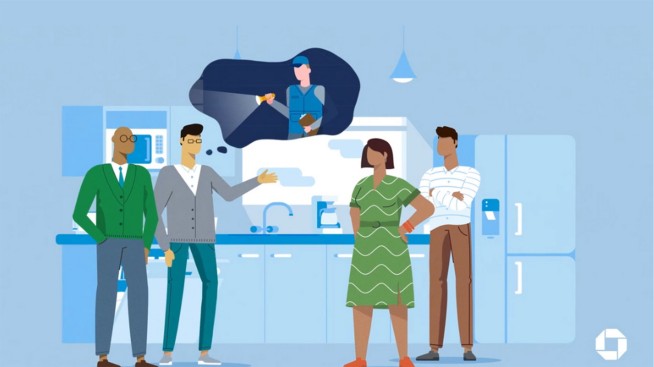5 advantages of buying a new home

There's something appealing about buying a brand new home. Aside from that exciting new-home smell, you're moving into a home with brand new appliances, HVAC, roof and the list goes on. Whether you're buying a recently built home or one that's under construction, there are several advantages to consider.
1. You can customize its features
If you purchase a home while it's being built, you may be able to customize certain features. Many builders give buyers the perk of designing aspects of the home to suit their tastes. The level of customization depends on the stage of construction. For instance, if the home hasn't been built yet, you may be able to tweak the floor plan to add or move a closet, bathroom or even change the height of the ceilings. If the home is already built, your options may be limited to things like wall colors and light fixtures.
Other customizable features of a new home may include:
- Flooring type and color
- Interior or exterior paint colors and siding
- Appliances
- Electric outlet placement
- Shutters and blinds
- Cabinets, counters, and other kitchen features
- Doors
- Crown molding, shiplap, and wainscoting
- Fixtures such as lighting, mirrors, and knobs
- Landscaping
These options help you move into a home that truly reflects you and your tastes.
Even better, the builder is doing the work for you. You won't spend weeks completing home improvement projects; you can settle right in to your dream home.
If you've identified must-have items in your home, such as wood floors or energy-efficient windows, then buying a new build might be the way to go. Adding or replacing these types of features in an existing home can be time consuming and expensive.
Keep in mind that adding custom features to your home can increase the base price. Use our affordability calculator to help set your budget, and stick to it.
2. It's more energy-efficient
Building codes now include higher energy efficiency standards. So if you're buying new, you know you're getting some of the most energy-efficient features available.
This could include:
- More tightly sealed walls, roof, windows, and doors to prevent heating and cooling loss
- Double-, triple-, and even quadruple-paned windows to minimize heat transfer
- Higher-efficiency insulation
- Dual-flush or water-saving toilets
- LED lighting
Why are these features important? Each one helps reduce your carbon footprint and utility costs.
New homes are also more likely to come with green and energy-efficient devices such as smart thermostats, as well as high-efficiency furnaces and heat pumps, water heaters and kitchen appliances. While you can certainly add these to an older home, it can cost a lot more.
To find out which features a new home includes, ask the builder for a list of energy-saving items, or have a third-party inspector give the home an energy score when performing your home inspection.
3. Less maintenance and fewer repairs
If you buy a new build from a reputable builder, you should encounter fewer maintenance issues and repairs than with an older home. The new floors, appliances, windows and other materials haven't experienced years of wear, so they shouldn’t need to be replaced anytime soon.
Many builders also design today's homes to be low-maintenance. They might choose materials that won't require replacing or repainting. Your home's exterior trim, for instance, might be long-lasting composite instead of wood.
And because you're bound to encounter some repairs regardless of your home's age, most new homes come with some type of warranty. Check with the builder to see what’s covered, and for how long.
Items covered by a short-term or an extended warranty in new builds can include:
- Heating and cooling
- Windows and doors
- Plumbing
- Electrical systems
- Exterior siding, drywall and paint
- Roofing
- Foundation and flooring
When you buy an older home, existing warranties might be expired, or you may have to purchase a home warranty to get the coverage you desire.
4. The latest features and technology
As our lives become more technology driven, so do our homes. New homes often include the latest technology that can make your life easier.
This may include:
- Alarm systems
- Smart door locks
- Built-in speakers and audio systems
- Smart thermostats
- Wi-Fi
- Ample outlets for a variety of devices in every room of the home
- Advanced wiring networks so you can access data connections from any room
- Touch-free faucets
- Smart lighting
Many new homes also have more advanced safety features, such as hard-wired smoke and carbon monoxide detectors, fire retardant carpeting and insulation, radon-resistant designs and updated electrical wiring.
And for further peace of mind, new homes should be built to the latest codes to help protect against natural disasters such as earthquakes, hurricane-force winds and heavy snow. New construction in Florida, for instance, must include continuous roofing panels, hurricane resistant doors and windows and sturdier fasteners.
Buying a new home gives you access to the latest features that help make your life more convenient and your home safer and more energy efficient. Again, most of these items can be added to an older home, but at a price.
5. It can be a good return on investment
Many people think of investment properties as older homes they can buy for bottom dollar and renovate to increase their value. New construction, however, can as also be a good investment. Much of a home's value depends on its location, and new neighborhoods often take shape in desirable areas.
They might be surrounded by new roads and sidewalks, green spaces, shopping centers and good schools.
The home itself might be easier to sell when you're ready to move. It has modern amenities and design elements many buyers desire, from an open floor plan and large walk-in closets to high-end appliances and finishes. And you won't have to spend time and money updating living spaces or replacing outdated appliances before putting it on the market. Plus, it's likely to have at least retained, if not increased, in value.
Other features that can attract buyers are items still under warranty, such as the roof, and energy efficient materials and appliances. Savvy shoppers are starting to put a priority on these items.
As a whole, the quality of a new home depends on its builder. Before buying, research the builder to see if they have a good reputation and a record of producing quality homes. Read online reviews and get references from other homeowners. Avoid red flags such as not finishing construction on time or refusing to fix issues. Look for builders whose homes and developments tend to sell quickly.
Buying a brand new home has a lot of benefits. You can enjoy adding personal touches to make it your own after you close.



